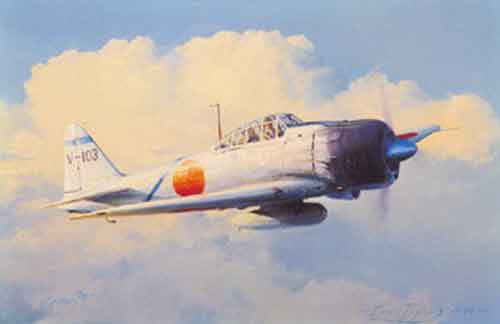Flightdeck Friday: Boeing F4B-4
trans·for·ma·tion (trÄns’fÉ™r-mÄ’shÉ™n): the act of changing in form or shape or appearance.
1928. Boeing is rolling the dice and has invested its own money in developing two prototype aircraft it hopes to demonstrate to the Navy and later the Army as replacements for the F3B, currently serving with the Navy, and PW-9, serving with the Army. Choosing conventionality, they poured all of their design knowledge into the new fighter while carrying over the the Pratt & Whitney Wasp engine from the F3B. The first prototype, Model 83, flew on 25 June 1928 and the second, Model 89, on 7 Aug 1928 at Anacostia in Washington, DC. Sufficiently inpressed following trials at Anacostia as the XF4B, the navy went ahead with an initial order of 27 F4B-1s, also modifying the two prototypes to the F4B-1 standard.
The F4B-1 first flew 0n 6 May 1929. Powered by Wasp R-1340-8 engines and capable of carrying a 500lb bomb, the F4B-1 was delivered to VB-1B (Lexington) and VF-2B (Langley) beginning in June 1929. In this configuration, the Army evaluated the aircraft and eventually purchased it as the P-12.
During the next few years both versions underwent several modifications – adding Frise ailerons, a spreader bar axle between the wheels and a ring cowling to become the F4B-2. The fuselage remained a square tube/fabric constructed affair though and would be so until the F4B-3.
The F4B-3 differed markedly from the earlier modles by introducing a semi-monocoque metal fuselage to replace the square metal tube/fabric one of earlier models. The F4B-3 first flew in 1931 and was introduced in VF-1B, embarked in Saratoga in December 1931. Still, the definitive model was the F4B-4:
Recognizeable from the larger rudder and headrest area (better able to hold a deployable life raft), the F4B-4 also added two wing racks for 116lb bombs. The F4B-4 was introduced with VF-3B on Langley and VF-6B on Langley in July 1932. Deliveries also were going to the Marines (primary difference being the removal of the tailhook) with VF-10M and VF-9M receiving aircraft about the same time. All told, There were 45 F4B-4 bought of which the Marines received 21.
The F4B-4 remained in naval service well into the late-1930’s, until it was replaced by the Grumman F3F-1 with its higher speeds made possible by retracting gear.
Writing several decades later (Flying the Old Planes), Frank Tallman noted the construction of these Boeings:
One thing that all the Boeing biplane fighter series had in commmon was that they were built like a certain brick edifice, and the pilots took advantage of the plane’s near indestructibility in flight and their outstanding performance to practice maneuvers unknown to an earlier generation of pilots. The early F4B/P-12 had a bolted square aluminum tubing fuselage, fabric covered from just forward of the cockpit. It also had a metal turtleback extending to the tail, which could be removed with quick-attach fittings for almost instant maintenance. The wings were wooden spars, wood ribs, and fabric covered, with the rib stitching very close for strength. There certainly must have been some sore fingers and weak eyes in the Boeing plant, for this exceptionally close stitching carried flight loads in excess of nine G`s!
The F4B served an important role as a sturdy, reliable platform that provided a transformational duty as the Navy continued to experiment with and develop tactics for the aircraft carrier. By all accounts it was a reliable aircraft around the ship and a fairly stable platform, even later when it grew in weight with the move to the all metal fuselage. Frank Tallman writes of the relatively benign handling of the earlier model (in the P-12 vairant) and how its docile handling actually begins to work against it in some of the outer edges of the performance envelope – for example he could not get it to complete an outside loop. The smaller rudder surfaces presented their own challenges in spin revcovery, such that the recovery proceedures for a flat spin where to bailout (not enough rudder authority). That, apparently, was one of the driving factors for the larger rudder found on the -4. Still, it was, as noted, a rugged aircraft and given to, for the time, good characterisitcs around the ship.
Total production of the F4B/P-12 reached 586; almost 350 were ordered by the Army. Two were sent to Thailand where one remains today on display in the Royal Thai Air Force Museum, and twenty-five were built for Brazil. Of these, only one ever saw combat. Model 281, from which the F4B-3 and P-12E were developed, was sold to China where it was shot down by the Japanese after downing two of its three attackers.
BASE INFORMATION:
Base Series Designation: Boeing F4B
Classification Type: Naval Carrierborne Fighter / Bomber
Contractor: Boeing Aircraft Corporation – USA
Country of Origin: United States
Initial Year of Service: 1929
Crew / Passengers: 1
Production Total: 586*
DIMENSIONS:
Length: 20.08 ft | 6.12 m
Wingspan/Width: 29.99 ft | 9.14 m
Height: 9.32 ft | 2.84 m
Empty Weight: 2,355 lbs | 1,068 kg
MTOW: 3,611 lbs | 1,638 kg
PERFORMANCE:
Engine(s): 1 x Pratt & Whitney R-1340-D Wasp air-cooled nine-cylinder radial piston engine.
Maximum Speed: 188 mph | 303 km/h | 164 kts
Maximum Range: 370 miles | 595 km
Service Ceiling: 26,903 ft | 8,200 m | 5.1 miles
Climb Rate: 1,666 ft/min (762.5 m/min)
ARMAMENT:
Armament:
2 x 7.62mm machine guns







